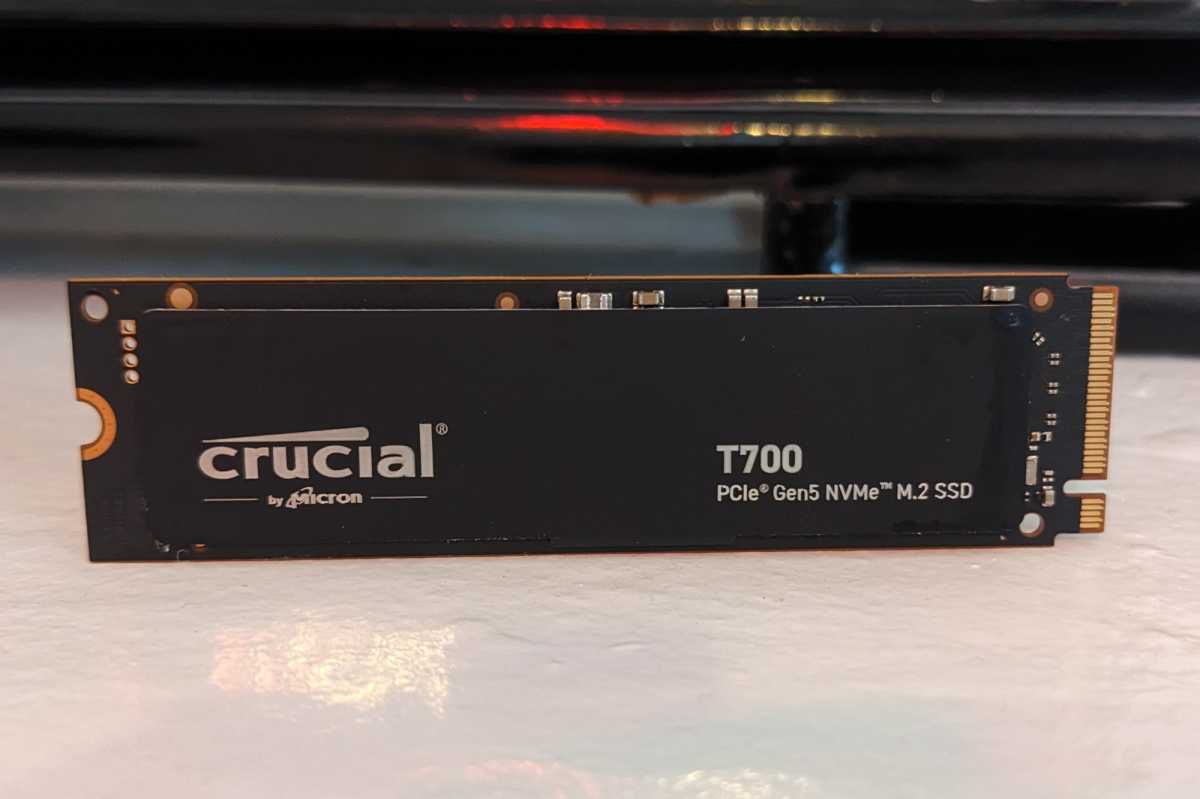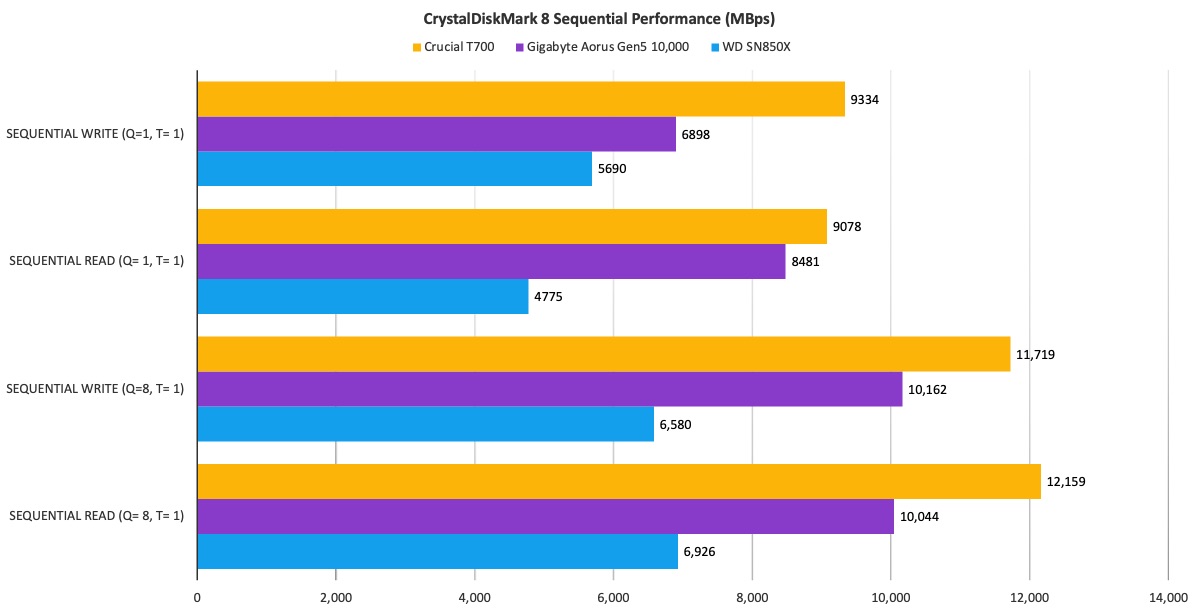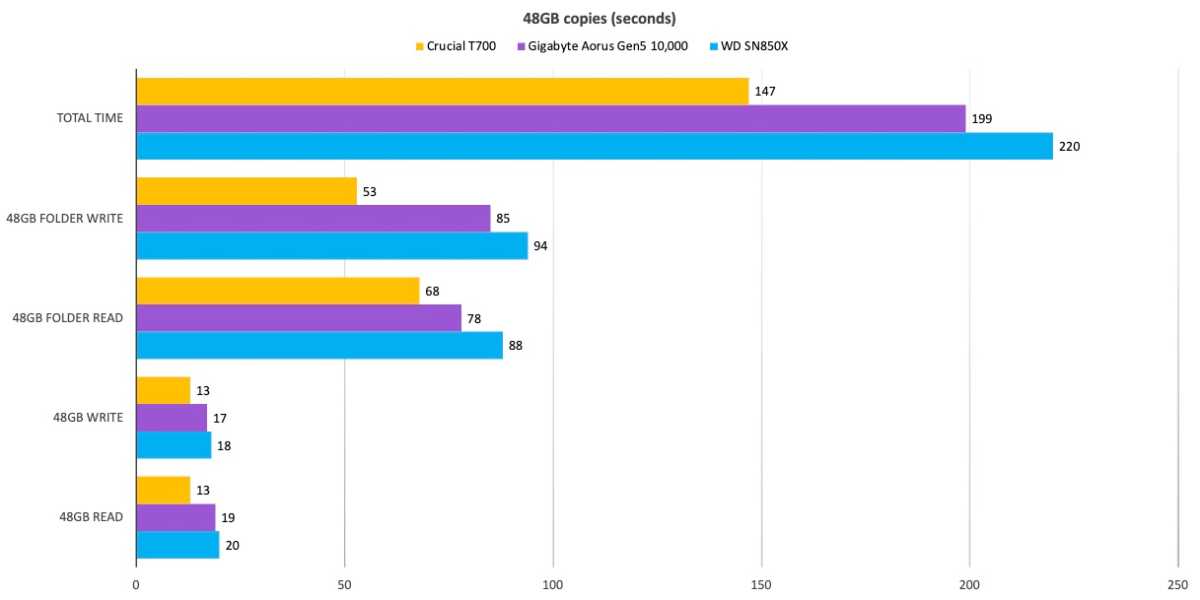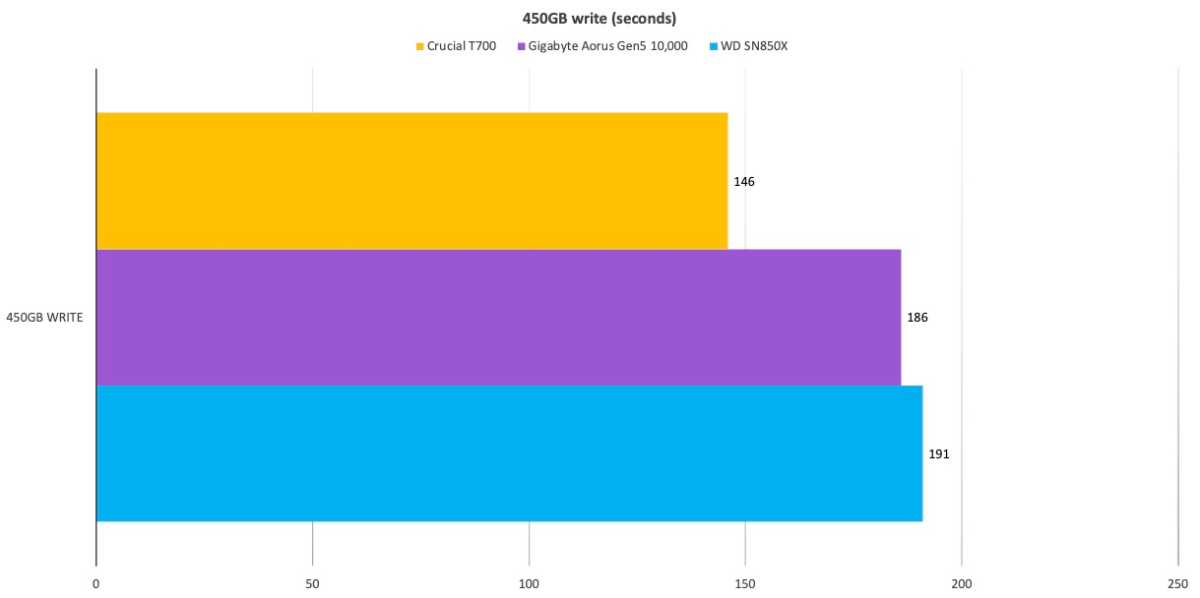Expert rating
Benefits
- Breathtaking performance
- Available with or without radiator
- Up to 4 TB capacity
The inconvenients
- extremely expensive
- Requires the still rare PCIe 5.0 M.2 slot
Our opinion
Crucial’s T700 broke all of our benchmark and real-world records by quite a wide margin. If your system has a PCIe 5.0 M.2 slot, this SSD will take your storage performance to another level.
Best Prices Today: Crucial T700 PCIe 5.0 NVMe SSD

$179.99

$179.99
Nothing revs a storage reviewer’s engine more than a big leap in mainstream performance. Hitting that long skinny pedal for me was Crucial’s T700 PCIe 5.0 NVMe SSD, which transferred data a gigabyte per second faster than any SSD we’ve tested to date. All I can say is “Yowser!”
Price, design and specifications
The T700 is available in 1TB, 2TB (tested) and 4TB capacities. It is sold bare or with a rather beefy heatsink for $180/$210/£175/£203, $340/$370/329 £/£359, $600/$620/£583/£611, respectively. Alas, that’s almost twice as expensive as some very good PCIe 4.0 competitors, even if you’re paying for a real leap in performance (see below). Note that these are pre-release prices provided by Crucial, so you might find it cheaper after launch. Look around you.
In the US, it’s available from Crucial, Amazon, BestBuy, and Adorama. In the UK you can buy it from Crucial, Amazon, Ebuyer, CCL and Box.
Further reading: Check out our roundup of the best SSDs to learn more about competing products.

Jon Jacobi / Foundry
As for the optional heatsink, most users will be fine without it, but if you’re going to pound the drive in a system with lots of other heat-producing components, it couldn’t hurt.
The 2280 form factor (22mm wide, 80mm long) of the T700 uses the all-new Phison PS5026-E26 controller and Micron’s own 232-layer TLC NAND. (Crucial is a Micron brand). There is 1GB of DDR4 main cache for every 1TB of capacity.
The TBW (terabytes writeable) rating for the T700 is 600 TB per terabyte of capacity. If you didn’t know, TBW is the mitigating factor in SSD warranties (five years in this case), like miles are to years in an auto warranty.
Performance and benchmarks
The T700 smashed the field, including the recently revised and once fastest Gigabyte Gen5 10,000. We’re really talking about a whole new level of performance, which held up in real-world testing to a far greater degree than the Gigabyte SSD. I could go on, but instead check out the gold bars in the charts below.

Note that the WD SN850X is an included PCIe 4.0 drive for comparison. It’s among the fastest 4.0 SSDs we’ve tested and was retested on our last test bench. (See the “How We Test” section at the end of this article.
One thing we observed is that formatting the T700 is a bit slow compared to many NVMe SSDs, regardless of PCIe revision. But who cares when you can shave off a good chunk of a minute on a 48GB file transfer and 40 seconds on a 450GB write, as we found?
We’re really talking about a whole new level of performance, which held its own in real-world testing.

Crucial T700 48GB transfers showed great real-world improvement, unlike the
Gigabyte. Shorter bars are better.
Jon L. Jacobi
Note that the 450 GB write test currently uses a PCIe 4.0 drive to transmit the file to other drives. We’ll be addressing this issue soon now that we have multiple PCIe 5.0 SSDs in-house, but regardless, the T700 once again smashed the competition by a good 40 seconds.

Due to the slightly insane numbers that appear, the test experience with the T700 was just a general hoot. So much so that I also installed a few operating systems on it, and they felt faster. Not a huge difference, but noticeable.
Verdict
The T700 is absolutely the current king of the hill, and it’s not even a particularly close contest. If you have the required PCIe 5.0 M.2 slot, this is the NVMe SSD you want, assuming you have the financial means to pay for the privilege.
How we test
Internal drive tests are currently using Windows 11 (22H2) 64-bit running on an X790 (PCIe 5.0) motherboard/i5-12400 CPU combo with two Kingston Fury 32GB DDR5 modules (64GB total memory). Intel integrated graphics are used. The 48 GB transfer tests use an ImDisk RAM disk occupying 58 GB of the total 64 GB memory. The 450 GB file is transferred from a 2 TB Samsung 990 Pro, which also contains the operating system.
Each test is performed on a newly formatted drive and TRIM so that the results are optimal. Note that as any drive fills up, performance decreases due to less NAND for secondary caching and other factors.
The performance figures shown apply only to the drive shipped to us and the capacity tested. SSD performance may vary by capacity due to more or fewer chips to read/write and the amount of NAND available for secondary caching (writing TLC/QLC as SLC). Vendors also occasionally swap components. If you ever notice a significant discrepancy between the performance you’re experiencing and what we’re reporting (the systems being roughly equal), please let us know.
Table of Contents







